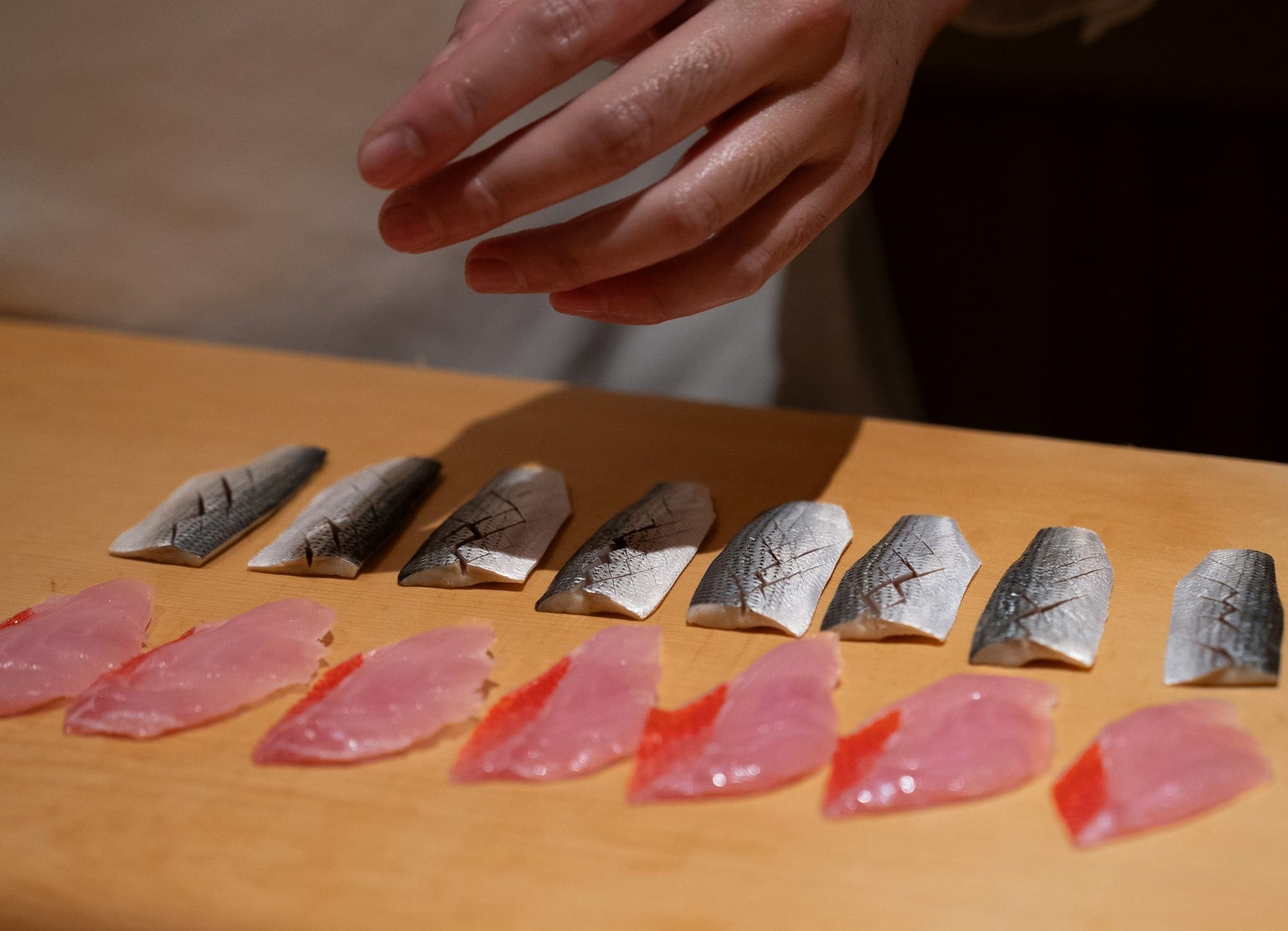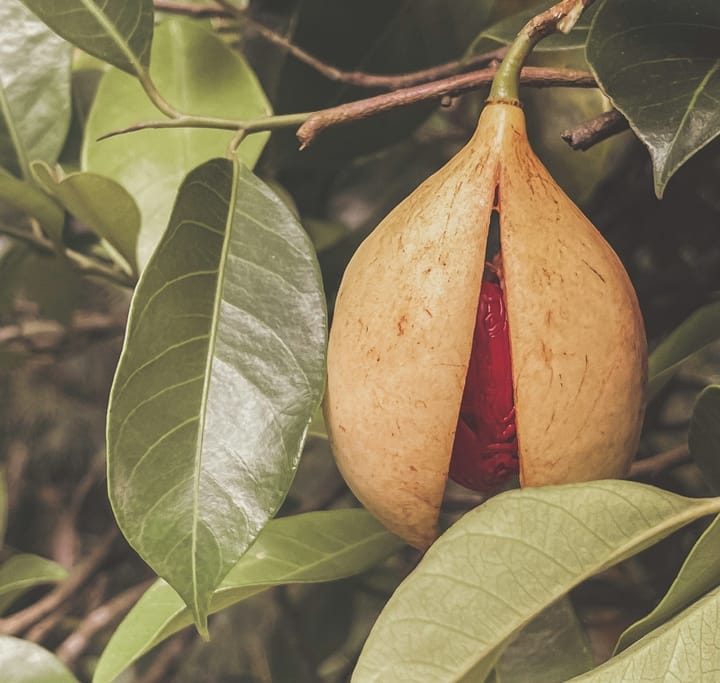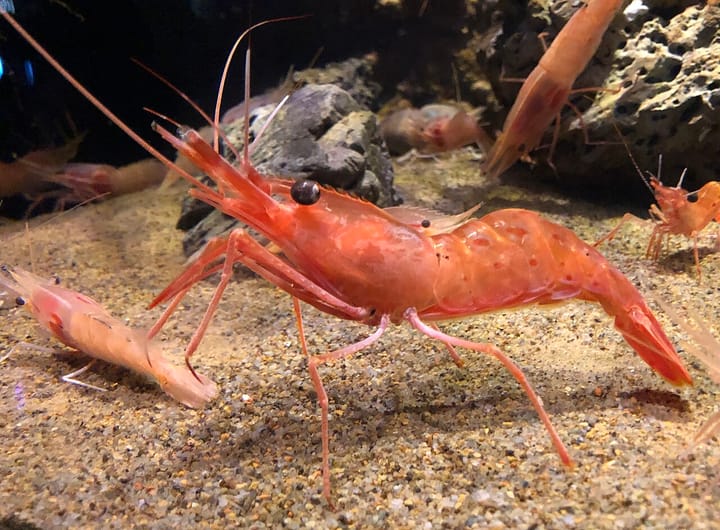Japanese Mackerel (Ma Saba): The Secret Behind Its Profound Umami
Japanese mackerel (ma saba) captivates elite sushi chefs worldwide with its bold ocean flavor and rich umami. This prized fish delivers complex taste that evolves from briny to sweet on the palate.

Walk into any high-end sushi bar in Tokyo, and you'll notice something interesting. While tourists gravitate toward fatty tuna and sweet shrimp, the local regulars often order ma saba—Japanese mackerel.
This isn't because they're being frugal. They know something that many Western diners are just beginning to discover: properly prepared mackerel delivers one of the most complex, satisfying flavors in the ocean.
What Makes Ma Saba So Special

Japanese mackerel isn't subtle. It hits you with bold, unapologetic ocean flavor that's nothing like the mild white fish most Americans grow up eating.
The taste starts briny and metallic, then mellows into something rich and sweet, finishing with that deep savory note the Japanese call umami.
This intensity comes from the fish's lifestyle. Mackerel swim near the surface of the ocean, constantly moving, building up oils in their flesh that create layers of flavor.
When caught at the right time—especially in fall and winter when they're fattiest—these fish contain over 20% oil content.
That's what gives them their silky, almost buttery texture and rich taste that lingers on your palate.
Where the Best Mackerel Come From
The finest ma saba comes from specific waters around Japan where warm and cold currents collide.
These convergence zones, particularly off Shizuoka, Kanagawa, and Miyagi prefectures, create incredibly nutrient-rich waters packed with the plankton that mackerel feed on.
The town of Sakata in Yamagata Prefecture has become especially famous for its mackerel, with local fishermen using a special dispatching technique called ikejime that preserves the fish's quality by preventing stress hormones from affecting the flesh.
Timing matters enormously. Autumn mackerel, called aki-saba, are the most prized because they've spent months building up fat reserves for winter.
Spring mackerel are leaner and more delicate—some chefs prefer them for their subtlety, but most consider fall and winter the peak seasons.
Japanese fishermen typically catch these fish using pole-and-line methods or small nets, techniques that minimize stress and preserve quality.
The Magic of Salt and Vinegar
Raw mackerel spoils incredibly quickly—so quickly that there's a Japanese saying about how it's impossible to serve it ultra-fresh like other sashimi.
This challenge led to one of Japanese cuisine's most brilliant solutions: shime saba, or salt-cured and vinegar-marinated mackerel.
The process looks simple but requires years to master. First, the chef fillets the fish, removing every tiny bone while keeping the silver skin intact.
Then comes the salt—lots of it. The fillets get buried in coarse sea salt for anywhere from 30 minutes to several hours, depending on the fish's size and fat content. This pulls out moisture and firms up the flesh.
After rinsing off the salt, the fish takes a bath in rice vinegar, sometimes infused with kombu (kelp) for extra umami.
This vinegar bath does something remarkable—it "cooks" the fish without heat, turning the flesh from translucent to opaque white while killing any bacteria. More importantly, it transforms the flavor completely.
The aggressive fishiness mellows out, the oils become more pronounced, and the whole thing develops this bright, tangy note that perfectly balances the richness.
Some chefs take it further, lightly torching the skin to release aromatic oils and create a crispy-soft contrast.
The end result is something that bears little resemblance to raw mackerel—it's firm yet yielding, rich yet bright, complex yet clean.
Beyond the Sushi Counter
While most Americans know shime saba as a sushi topping, Japanese chefs use it in dozens of ways.

In Kyoto and Osaka, families make saba-zushi for special occasions—pressed mackerel sushi wrapped in bamboo leaves, often following recipes passed down for generations.
High-end kaiseki restaurants might serve paper-thin slices as part of an appetizer spread, paired with grated daikon and ponzu sauce.
Modern chefs are getting creative too. You'll find shime saba served carpaccio-style with yuzu olive oil, paired with pickled vegetables, or even aged for several days to develop funky, cheese-like flavors that hardcore fans absolutely love.
Some cure just the outside, leaving the center almost raw for textural contrast.
The versatility is remarkable. Because the curing process stabilizes the fish, it can be used in ways that fresh mackerel never could.
It's showing up in everything from rice bowls to fusion appetizers, always bringing that distinctive rich, tangy, umami-packed flavor that nothing else can replicate.
Cultural Significance
In Japan, mackerel isn't just food—it's woven into the culture. Regional festivals feature special mackerel dishes, and certain preparations are reserved for celebrations and ceremonies.
The fish even appears in common sayings and folklore, usually referring to its notorious tendency to spoil quickly.
This perishability has shaped entire distribution networks in Japan. Before refrigeration, elaborate systems of runners and boats were established just to get mackerel from port to inland cities quickly enough.
Even today, the speed and care with which mackerel is handled serves as a benchmark for a restaurant's overall quality standards.
The Japanese concept of "shun"—enjoying ingredients at their seasonal peak—applies strongly to mackerel.
Serious eaters know that autumn mackerel offers richness, while spring mackerel provides delicacy.
Why Chefs Obsess Over It
Talk to any sushi chef about ma saba, and you'll likely get a passionate response. It's a fish that demands respect and skill.
You can't hide behind expensive ingredients or flashy presentation—either you know how to handle mackerel, or you don't.
The margin for error is minimal. Salt it too long, and it becomes inedibly salty. Not long enough, and it stays mushy.
Too much vinegar masks the fish's natural flavor; too little fails to transform it.
Every decision matters, from selecting the fish to timing each step of the cure. It's this challenge that makes mastering shime saba a point of pride for chefs.
There's also something democratic about mackerel. Unlike luxury ingredients that impress through rarity or price, mackerel impresses through technique and understanding.
A perfectly prepared piece of shime saba can deliver as much satisfaction as any expensive delicacy—proof that in Japanese cuisine, skill matters more than cost.
The Bottom Line
Ma saba represents everything that makes Japanese cuisine fascinating. It takes an ordinary fish—one that most cultures consider too strong or too oily—and transforms it into something extraordinary through technique, tradition, and deep understanding.
The process of making shime saba isn't just preservation; it's alchemy, turning base metal into gold through salt, vinegar, and expertise.
For food lovers ready to expand their horizons, ma saba offers an accessible entry point into the deeper flavors of Japanese cuisine.
Yes, it's bold. Yes, it's different from what most Americans grew up eating. But that's exactly the point. In a world of mild, farmed fish designed to taste like nothing, mackerel stands defiant—wild, flavorful, and uncompromising.


